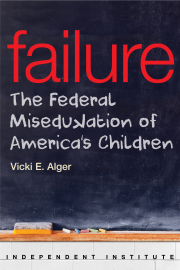Fifteen years ago Nobel Prize-winning economist Milton Freidman noted that just because we finance education through government that does not mean government should be in charge of delivering education. “Education spending will be most effective,” Friedman explained, “if it relies on parental choice and private initiative—the building blocks of success throughout our society.”
Education savings accounts (ESAs) are a new method of fulfilling that goal by giving parents control over resources so they can direct education dollars where they belong: to high quality instruction, not bloated school bureaucracy.
The concept behind ESAs is simple. Parents who do not prefer a public school education simply promise not to enroll their child for the upcoming year, and 90 percent of what the state would have sent to the public school is deposited into that child’s ESA instead. Parents then use a type of “debit card” to pay for education services and supplies, including private school tuition and fees, online courses, tutoring, therapists, and testing programs. Importantly, leftover funds remain in the child’s ESA and can be used for future education expenses, such as college.
Arizona became the first state to enact an ESA program in 2011, followed by Florida in 2014. Both programs serve students identified as having special educational needs. Arizona has sinceexpanded its program to include students in or assigned to failing public schools, students from the foster care system, as well as children of Active Duty members of the military stationed within the state. Proposed expansions introduced this year would make students being raised by their grandparents, those who live on Indian reservations, and students on public school waiting lists eligible for Arizona ESAs. Gov. Rick Scott has also proposed $5 million in additional funding to expand Florida’s ESA program.
ESA programs in Arizona and Florida are enrolling nearly 2,600 students combined and are helping parents customize their children’s education to degrees few Americans could otherwise afford. Not only are parents more satisfied, students are thriving academically and socially for less than what it costs in a public school setting.
The ability to choose not simply where but how their children are educated results in high parental satisfaction with ESAs, according to follow up studies. Fully 100 percent of participating Arizona parents reported being satisfied with the program, with 71 percent reporting they are “very satisfied.” In contrast, just 43 percent of parents reported any level of satisfaction with their children’s previous public schools.
Research consistently shows how school choice benefits children and society generally. For example, disadvantaged students, including special needs, minority, and low-income children, who use scholarships to attend the schools their parents think are best perform better in reading and math, have higher high school graduation rates, college attendance rates, and higher college graduation rates than their peers who did not use scholarships.
In Arizona and Florida, ESAs are limited to families with special needs or circumstances, and at least nine other states are considering enacting similar ESA programs. But there is no good reason to limit ESAs to select student populations. Every student, regardless of his or her circumstances, should have the opportunity for personalized learning.
Parents empowered over their children’s education funding are free to seek a variety of education service providers. This has the important benefit of encouraging a more dynamic education marketplace. Since education providers are not constrained to work within a rigid, bureaucratic public school system, they are free to innovate and tailor their services to the needs of individual children.
The increased competition for students creates a big incentive for providers to offer effective, high quality programs at reasonable prices, or they risk losing students to other providers and going out of business.
ESAs are a student-centered funding mechanism that can personalize learning for all students by putting their parents in charge. This policy approach is a win-win for students, families, and taxpayers—and every state should consider a universal ESA program.









